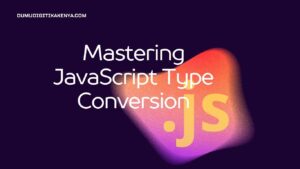Introduction To HTML Entities
Welcome to our comprehensive guide on HTML Entities, where we unravel the intricacies of this essential aspect of HTML programming. In the dynamic realm of web development, understanding HTML Entities is akin to wielding a powerful tool that ensures your web content remains both visually appealing and compliant with standards. HTML Entities, often overlooked by beginners, play a pivotal role in rendering special characters and symbols accurately within your web pages. In this tutorial, we will delve deep into the world of HTML Entities, exploring how to use them effectively and providing you with hands-on examples to make learning a breeze. Whether you’re a novice web developer or seeking to bolster your HTML skills, this guide will equip you with the knowledge needed to harness the potential of HTML Entities and elevate your web development prowess.
As we venture further, you’ll discover how HTML Entities enable you to gracefully display symbols such as <, >, and &, all while avoiding conflicts with HTML code. We’ll also explore numeric HTML Entities, offering insights into both decimal and hexadecimal representations, empowering you to confidently utilize these codes in your projects. Additionally, we’ll showcase how HTML Entities can breathe life into your web pages with special symbols that aren’t readily available on standard keyboards. By the end of this tutorial, you’ll not only grasp the significance of HTML Entities but also have the expertise to employ them seamlessly in your HTML documents. Whether your aim is to create captivating web content, enhance user experience, or ensure code validity, mastering HTML Entities is a crucial step on your web development journey.

Table of Contents
Step 1: What Are HTML Entities?
HTML Entities are special codes that represent characters or symbols that have a reserved meaning in HTML. These entities allow us to display these characters as content on a web page without triggering any unintended behavior. They are essential when you want to display characters like <, >, &, or special symbols like © and ™.
Step 2: Commonly Used HTML Entities
Less Than (<)
The HTML Entity < represents the less-than symbol (<). It is used to display the symbol without triggering the beginning of an HTML tag.
<p>This is an example of < in HTML.</p>Output:
This is an example of < in HTML.
Greater Than (>)
The HTML Entity > represents the greater-than symbol (>). It is used to display the symbol without ending an HTML tag prematurely.
<p>10 > 5 is true.</p>Output:
10 > 5 is true.
Ampersand (&)
The HTML Entity & represents the ampersand symbol (&). It is used to display the symbol without starting an HTML entity.
<p>AT&T is a telecommunications company.</p>Output:
AT&T is a telecommunications company.
Step 3: Numeric HTML Entities
In addition to named HTML Entities, you can also use numeric HTML Entities. Numeric entities are represented using either decimal or hexadecimal values.
Decimal Numeric Entity
The decimal numeric entity is represented as &# followed by the decimal value of the character.
<p>© 2023 All Rights Reserved.</p>Output:
© 2023 All Rights Reserved.
Hexadecimal Numeric Entity
The hexadecimal numeric entity is represented as &#x followed by the hexadecimal value of the character.
<p>™ Trademark symbol</p>Output:
™ Trademark symbol
Step 4: Special Symbols
HTML Entities are especially useful for displaying special symbols that are not present on standard keyboards.
<p>♥ ♣ ♦ ♠</p>Output:
♥ ♣ ♦ ♠
Step 5: Using HTML Entities in Attributes
You can also use HTML Entities within attributes, such as href or alt, to ensure proper rendering and validation.
<a href="mailto:youremail@example.com">Contact <Us></a>Conclusion
In conclusion, our exploration of HTML Entities has unveiled a fundamental facet of HTML programming that every web developer should have in their toolkit. HTML Entities, the unsung heroes of web development, empower you to display special characters and symbols with precision, ensuring your web content is both visually striking and compliant with HTML standards. Throughout this tutorial, we’ve delved into the intricacies of HTML Entities, covering common named entities, numeric entities, and their applications within HTML attributes. Armed with this knowledge, you’re now well-equipped to craft web pages that not only captivate your audience but also adhere to best practices.
As you embark on your web development journey, remember that HTML Entities are your allies in achieving content excellence. By incorporating them into your projects, you demonstrate a commitment to creating web content that’s not just eye-catching but also maintains the integrity of your HTML code. Whether you’re building a personal website, a business platform, or a blog, the mastery of HTML Entities is a skill that will set you apart in the competitive world of web development. So, go ahead, experiment with HTML Entities, and elevate your web design to new heights. HTML Entities: your key to creating web content that stands out and adheres to standards.




